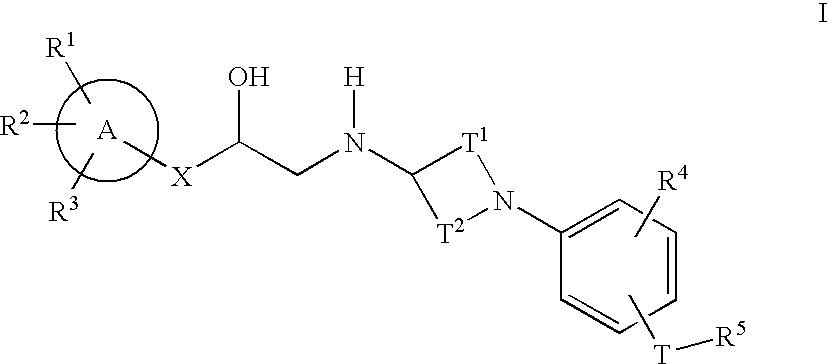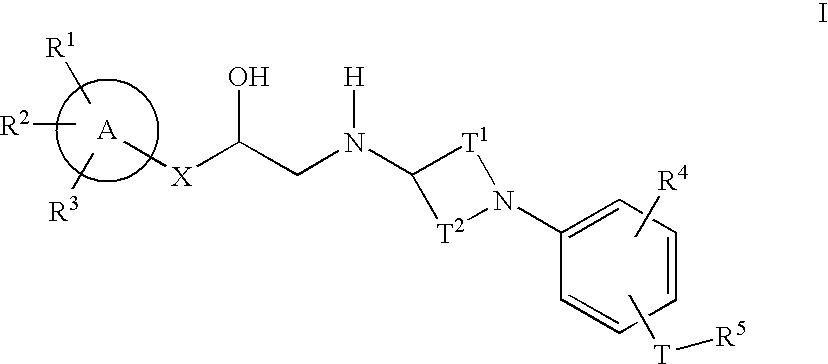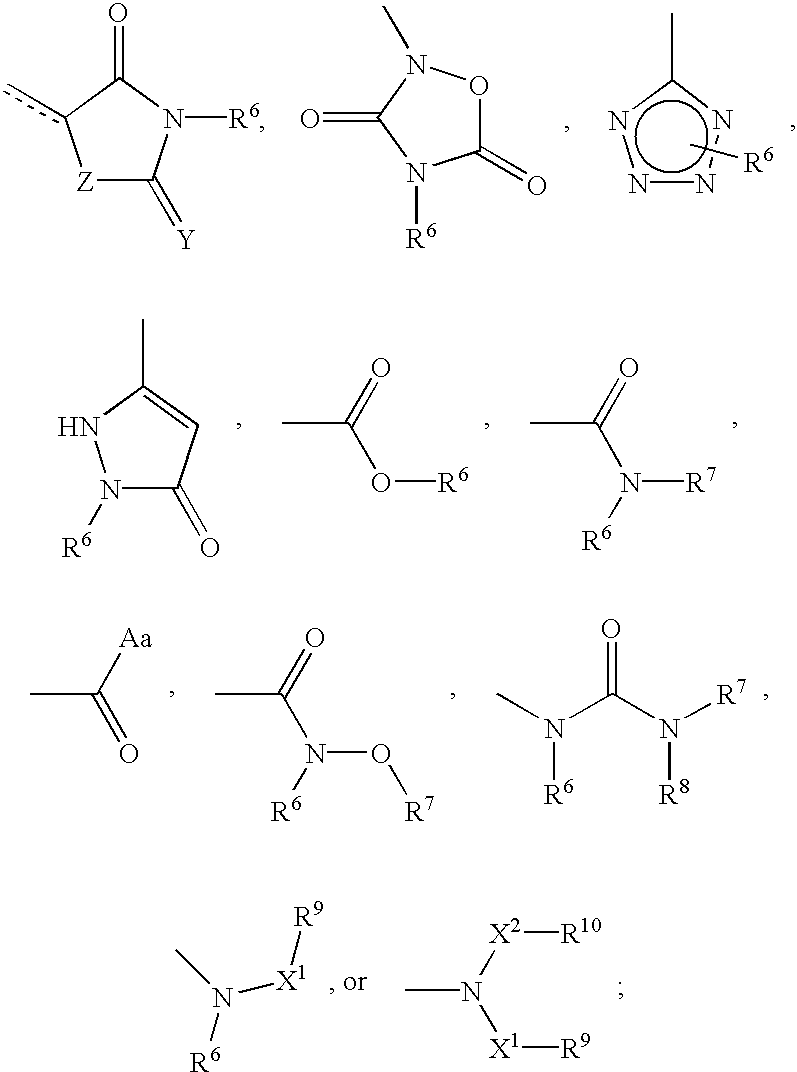Cyclic amine phenyl beta-3 adrenergic receptor agonists
a technology of adrenergic receptor and cyclic amine, which is applied in the direction of biocide, drug composition, metabolic disorder, etc., can solve the problems of abnormal urinary urgency, involuntary urine loss, and inability to perform clinical trials in humans with such compounds to date,
- Summary
- Abstract
- Description
- Claims
- Application Information
AI Technical Summary
Problems solved by technology
Method used
Image
Examples
example 1
(1R)-2-Amino-1-(3-chloro-phenyl)-ethanol hydrochloride
[0348]Lithium azide (7.5 g, 150 mmol) was added to a solution of (1R)-1-(3-chloro-phenyl)oxirane (15.5 g, 100 mmol in hexamethylphososphoramide (HMPA) (70 ml). After being stirred at room temperature for 16 hours the suspension was poured into ice-water and the mixture was extracted with diethyl ether. The combined extracts were dried over magnesium sulfate (MgSO4) and concentrated. The residue was dissolved in 550 mL of tetrahydrofuran(THF) / water(H2O) (10:1) and triphenylphosphine (30 g, 114 mmol) was added. After overnight stirring at room temperature, the solvents were removed and the residue was purified by column chromatography on silica gel using triethylamine-methanol-methylene chloride (CH2Cl2) (1:1:8) as the eluent to give the title compound as a free base.
[0349]The title compound was characterized as its hydrochloric salt: The free base from above was then dissolved in diethyl ether and slowly treated with hydrogen chlo...
example 2
(2S)-2-Phenoxymethyl-oxirane
[0350]A solution of phenol (9.4 g, 100 mmol) and (2S)-(+)glycidyl 3-nitrobenzenesulfonate (25.9 g, 100 mmol) in 500 mL of acetone was treated with 3 equivalents of potassium carbonate (41.5 g, 300 mmol) and stirred at reflux for 1 day. The suspension was cooled to ambient temperature; the solid was filtered; and the filtrate was concentrated to dryness. The residue was partitioned between methylene chloride and water. The aqueous layer was extracted with CH2Cl2. The organic layers were combined and dried over MgSO4 and concentrated to give the title compound (15.0 g, 99%) as an orange oil; 1H NMR (300 MHz, CDCl3) δ 2.76 (dd, J=4.9, 2.6 Hz, 1 H), 2.90 (dd, J=4.9, 4.9 Hz, 1 H), 3.30–3.40 (m, 1 H), 3.95 (dd, J=11.0, 5.4 Hz, 1 H), 4.18 (dd, J=11.0, 3.0 Hz, 1 H), 6.85–7.00 (m, 3 H), 7.25–7.35 (m, 2 H); MS (ES) m / z: 151.0 (MH+).
example 3
(2S)-1-Amino-3-phenoxypropan-2-ol
[0351]The title compound was prepared from (2S)-2-phenoxymethyl-oxirane (which was obtained in Example 2) according to the procedure of Example 1 with one change. The free base was obtained as a white solid; 1H NMR (300 MHz, DMSO-d6) δ 2.56 (dd, J=12.8, 6.3 Hz, 1 H), 2.67 (dd, J=12.8, 4.9 Hz, 1 H), 3.65–3.75 (m, 1 H), 3.82 (dd, J=9.8, 6.0 Hz, 1 H), 3.93 (dd, J=9.8, 5.0 Hz, 1 H), 6.85–6.95 (m, 3 H), 7.20–7.30 (m, 2 H); MS (ES) m / z: 167.7 (MH+); HRMS Calcd. for C9H13NO2(M+): 167.0946. Found: 167.0945.
PUM
 Login to View More
Login to View More Abstract
Description
Claims
Application Information
 Login to View More
Login to View More - R&D
- Intellectual Property
- Life Sciences
- Materials
- Tech Scout
- Unparalleled Data Quality
- Higher Quality Content
- 60% Fewer Hallucinations
Browse by: Latest US Patents, China's latest patents, Technical Efficacy Thesaurus, Application Domain, Technology Topic, Popular Technical Reports.
© 2025 PatSnap. All rights reserved.Legal|Privacy policy|Modern Slavery Act Transparency Statement|Sitemap|About US| Contact US: help@patsnap.com



